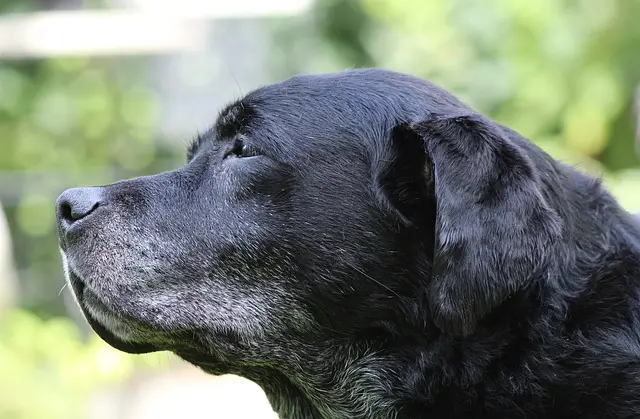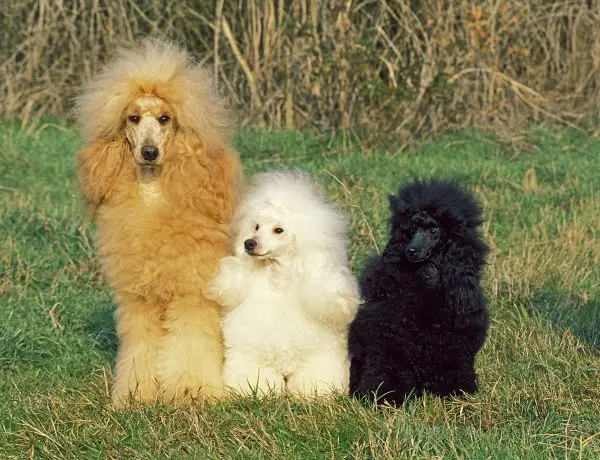Whether you are new to Labrador Retrievers or been in Labs for a while, you may have noticed a few with white markings on their coat. Do the white marks on a Labrador mean it isn’t purebred, or is it considered acceptable for a purebred Labrador to have white markings as well? Here is what you need to know.
For your Lab to exhibit white markings is normal, albeit somewhat rare. Depending on where the markings are and their size, they may be considered mismarked Labs. When present, the white markings commonly occur on the chest, feet, and tail. These markings were present in the ancestors of the Labrador, so they do still occur naturally today as well.
Small white markings on your Labrador’s chest, and above the back pads on their feet are allowed. Some may even be sought after by some breeders, because of the ancestry it suggests. If the spots are too large, however, it is not preferred. There are certain size spots and placements of them that are accepted, and others that are regarded as mismarks.
There are a few other mismarks in the breed as well, and not all of them are created equal in the eyes of breeders and the parent clubs.
Table of Contents
White marks on Labrador Retrievers?

The white marks, or patches, commonly referred to as ‘bolo spots,’ are generally on the Lab’s chest, and back of their feet right above the pads.
They are typically small in size. However, large patches covering the entire chest, back, or tail, are not considered bolo spots. Bolo spots got their nickname from an English Labrador named Banchory Bolo.
Dual FC-CH Banchory Bolo was the first dog to earn a dual champion in England, by winning both the Field Trial Champion and then later becoming a bench Champion.
He was a very noted dog of his time, and offspring from him were highly sought after.
Besides being famous for being the first dual-champion and having multiple championship-winning offspring, the white patch was something he passed on to each of his offspring. The mark will often go away or get covered up enough by black hairs that you no longer see it as the puppy grows older.
Bolo spots are generally not considered a true mismark and are allowed. Many of the dog show judges are aware of the marks and ignore them – depending on the size.
In the USA, the AKC accepted standard that the Labrador Club decided for their breed says that “A small white spot on the chest is permissible, but not desirable.”
In the UK, their breed standard says, “Small white spot on chest and the rear of front pasterns permissible. “
Because of the popularity and achievements attained of Banchory Bolo, some Lab breeders consider having the ‘bolo mark‘ a great accomplishment in their breeding program and consider Labs they breed that have it quite the quintessential Lab. After all, being able to trace their line back to a Lab of that quality is something to be celebrated.
Labradors are believed to have been descended from St. Johns Waterdogs, which incidentally is the same ancestor to Newfoundlands. The spots were quite typical on them, and sometimes will show themselves in modern breedings; much to some breeders surprise!
While white marks on a Labrador do not mean it isn’t purebred, it doesn’t necessarily mean that it is.
Accepted colors of Labradors

According to the US and UK breed standards, the only colors Labradors should be are black, yellow, or chocolate.
Any other color of their coat is considered either a mismark or it is a mixed breed.
Most of the mismarks have to do with recessive genes passed down through the generations, and do not typically get noticed until, by chance, two Labs that both have the recessive genes get bred together. Even then, you will only see one or two of the dogs have the mismarkings.
Another coloration commonly referred to as mismarked is silver. Unfortunately, they are not considered a mismark as much as they are deemed descendants of a mix. There has been an increase in popularity in “Silver Labs” lately, and with that, some people that try to sell them as “rare” or “highly sought after” Labs.
They are believed by many to initially be a mix of a Labrador and a Weimaraner, due to the recessive dilute gene that is responsible for their coloration.
Many have been registered by AKC over the past 40 years, but the ones that were registered were registered as chocolate Labrador Retrievers. The US and the UK both do not recognize silver as an accepted color for a Labrador. If you would like to read more about silver Labs and why the parent club here in the US does not recognize them, here is a great article written by Frances O Smith, DVM.
What are the common mismarks in Labradors?
Black and Tan – This is a black Lab with tan markings.
Black on Yellow – This is a yellow Lab with one or more black spots.
Brindle – This is a color pattern in their coat with a chocolate base color but with either splotches or stripes of dark brown to black.
Chimera or Mosiac – This is a rare abnormality, and will typically appear as patches of either black, yellow, or chocolate. It is due to problems during cell division. Fertilized eggs or early-stage embryos fuse, which form four parent cells.
Each group of cells keeps its own characteristics, resulting in the dog being a mixture of tissues. The only way to tell for sure if your Lab is Chimera or Mosiac would be to take DNA samples from two distinctively different areas of the dog.
Chocolate and Tan – This is much like Black and Tan, but it’s a chocolate Lab with lighter tan markings in the coat.
When trying to determine if a Labrador is a mismark or a mix, the cases above are considered the more common and documented mismarks found in Labs. These mismarks have been recorded for about as long as the breed has been around.
Mismarked puppies will generally be 1 or 2 of the dogs out of the litter, not the entire litter!
If the whole litter is “mismarked,” either they hit the genetic lottery for bad luck, or it is a good sign that that litter is mixed. Be sure you check that the breeder is reputable before deciding whether or not to purchase one of their puppies.
Why is my Chocolate or Black Lab getting White Hair?

When your chocolate or black Labrador starts getting white hairs throughout its coat, it could be for a couple of different reasons.
Typically it is contributed to either age or environmental factors, but in some very rare cases, it could be due to a condition known as vitiligo.
Much like people, as dogs get older, they can start having random white or grey hairs. This is caused by the lowered or loss of production of melanin. Melanin is what is responsible for giving us, and dogs, the pigment in our skin and hair. With the absence of melanin production in the body, the hair is just white.
Besides getting older, certain environmental factors could contribute to the loss of melanin production as well, such as diet or stress.
If the hair is turning white in patches through the dog’s coat, not just the face area, it could be an indication of vitiligo.
While nobody knows for sure what causes this condition, what it does is cause a loss of pigments to areas due to the destruction of melanocytes, which is what is responsible for making pigment-producing cells.
It is a relatively rare skin condition, but it can cause pigment loss in individual patches of your dog’s skin and coat.
While the mismarkings can undoubtedly affect whether or not you can show your Lab in the ring, it doesn’t necessarily have to alter the rest of your time with them.
The breed standard is simply a written description of the ideal specimen of that breed, and rarely does a particular dog meet this standard perfectly.
Mismarked Labradors may be undesirable in the show ring, but they can still function as well as any other Labrador – if your purpose of getting one was to hunt or for a pet.
As long as their physical attributes that are needed for hunting still follow the standard, and it is willing to learn to retrieve, it can still be a great hunting dog for you.
Those traits are chosen for the functionality of the breed, so they can perform the function that they were initially bred to do.




